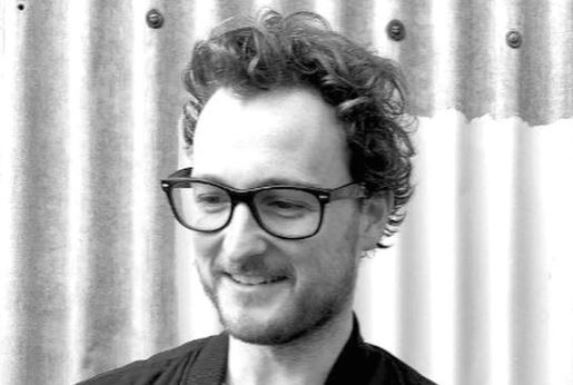Director Eddie White is best known for writing and co-directing 2009’s The Cat Piano, an eight-and-a-half-minute marvel narrated by Nick Cave and shortlisted for best animated short at the Oscars alongside films by Pixar and Aardman.
White and co-director Ari Gibson made the short at The People’s Republic of Animation, the company White founded with high-school friends in Adelaide while studying acting at Flinders University.
The shingle was eventually bought by video game developer Halfbrick Studios (creators of Fruit Ninja), but White had already moved on, in 2012, as the company began to specialise in video games and apps.
“I chose to go freelance, because I just wanted to make films at that stage, and I could see that wasn’t the business model for them,” he said.
White spent a couple of years developing an animated feature with Gibson which never got off the ground, as well as churning out short animations on commission.
He’s since turned his attention to live-action with Upside Down Feeling, a new short starring Odessa Young. Live-action suits the former acting student’s strengths, he told IF.
“I’m really not a technical guy. I’m really bad with computers. I can’t even use Photoshop. So [with] live action I got to really get in there and be involved. And animation costs a lot of money and takes a lot of time. So I’ve enjoyed the fact I can get out there and tell a story and do something visual that doesn’t necessarily have to cost many millions of dollars.”
The black-and-white short is autobiographical, influenced by movies White saw as a child such as Ghostbusters.
“I used to ask a lot of questions about death, and it was often related to what I’d seen in the movies. My mum was having to explain to me that the Marshmallow Man wasn’t real.”
“At that time in the 80’s, AIDS was in the media a lot, there were lots of ads about drugs, there was the threat of nuclear war going on with Raegan and Russia, and that was going on in the background. As a kid a lot of that stuff goes over your head, but I’d ask questions about those things. So I thought it’d be cool to make a short that used some of those things, like The Elephant Man, which made me think about disease and death in an unusual way.”
Another moment in the film, in which a house gets airborne, directly recalls The Wizard of Oz.
“When I saw that film as a kid I used to tell my Mum I had an 'upside down feeling' whenever I felt sick, like I was in a house in a tornado.”
“The miniatures were really fun to shoot, especially in black and white when everything suddenly looks like an old film. We had fishing wire to spin the house, fans blowing smoke, fur as grass and even dried oregano as leaves.”
The short came about at the behest of Adelaide Film Festival CEO Amanda Duthie, who had heard White wanted to get into live-action. The festival came onboard to finance, with additional funds from the South Australian Film Corporation. The final budget ended up at around $55,000.
“That’s quite healthy for a ten minute short, which was cool because we were able to do prosthetics and things like that,” said White. “Most of the money went towards the Elephant Man prosthetic.”
Odessa Young was cast after she’d shot The Daughter and Looking for Grace, though neither had come out. White saw her in Ben Briand’s short film Blood Pulls a Gun: “she was excellent in that and had such a confidence for somebody who was only 16 or so. She had such a presence.”
The shoot took place in December 2014, and premiered at the Adelaide Film Festival in October 2015.
Working on an actual set, instead of on a piece of paper or computer, was illuminating for the filmmaker.
“The director of photography, Jody Muston, taught me about depth. Getting depth in a shot and moving through space. In animation it’s generally about composition and the boldness of the colour than moving through an actual space, whereas in live action you can move a camera down a road, you can move a camera up a hallway. You can do all these things to add tension. You can do those things in CG animation but I hadn’t really worked in CG.”
Another novelty was the idea of coverage.
“In animation you’re editing the whole way through and if something doesn’t work you just animate it and suddenly it makes sense. Whereas with a live action short film you have to get it all, and that was tricky.”
White is currently developing a feature with Projector Films’ David Ngo (Rabbit). Set in Australia and Shanghai, Head is a sci-fi about a young woman who undergoes the world’s first head-to-body transplant, in which her head gets put on a new body.
But first, another short – “I want to make something again so I can flex that muscle and make some more mistakes.”


